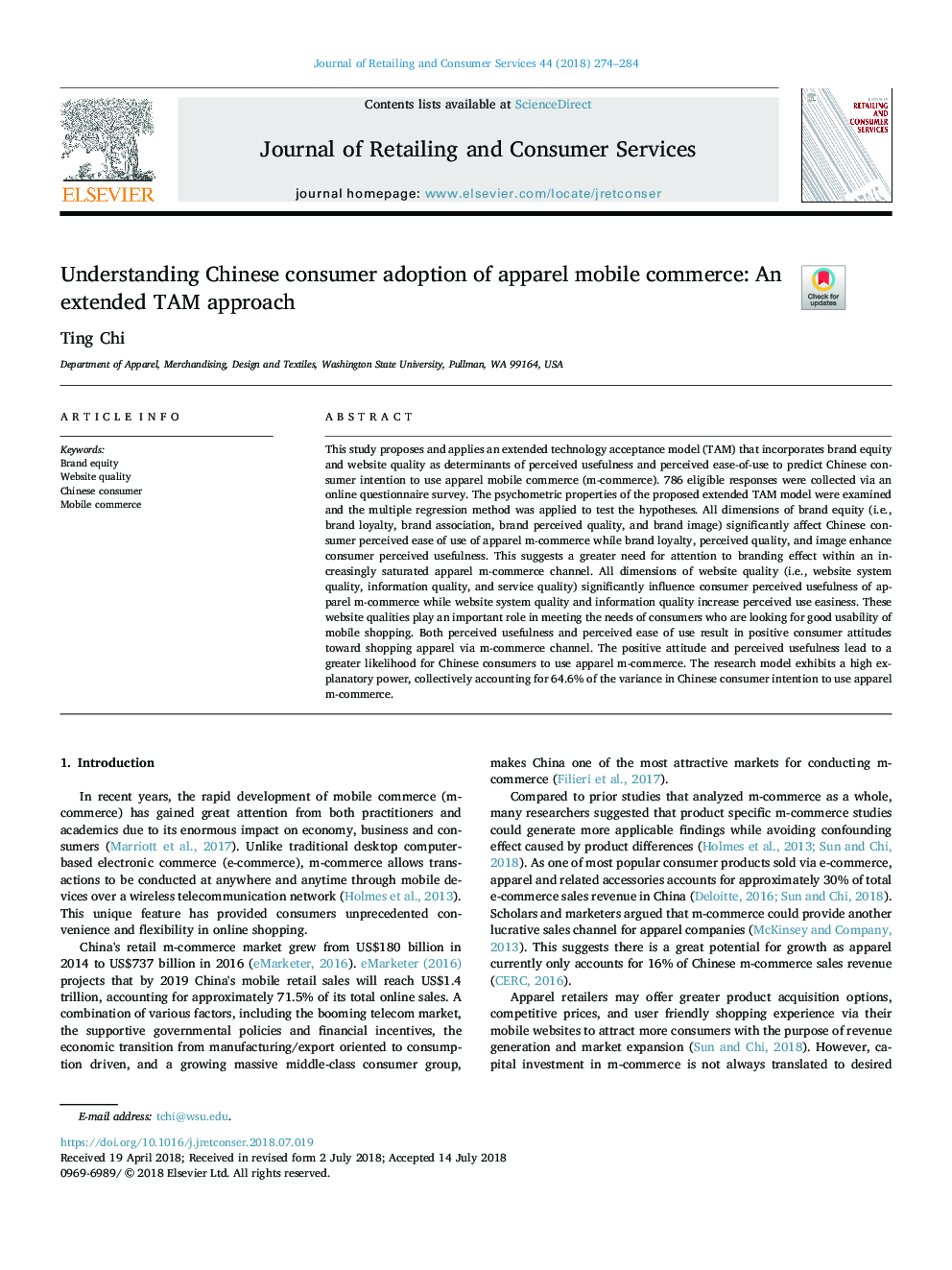| Article ID | Journal | Published Year | Pages | File Type |
|---|---|---|---|---|
| 7433341 | Journal of Retailing and Consumer Services | 2018 | 11 Pages |
Abstract
This study proposes and applies an extended technology acceptance model (TAM) that incorporates brand equity and website quality as determinants of perceived usefulness and perceived easeâofâuse to predict Chinese consumer intention to use apparel mobile commerce (m-commerce). 786 eligible responses were collected via an online questionnaire survey. The psychometric properties of the proposed extended TAM model were examined and the multiple regression method was applied to test the hypotheses. All dimensions of brand equity (i.e., brand loyalty, brand association, brand perceived quality, and brand image) significantly affect Chinese consumer perceived ease of use of apparel m-commerce while brand loyalty, perceived quality, and image enhance consumer perceived usefulness. This suggests a greater need for attention to branding effect within an increasingly saturated apparel m-commerce channel. All dimensions of website quality (i.e., website system quality, information quality, and service quality) significantly influence consumer perceived usefulness of apparel m-commerce while website system quality and information quality increase perceived use easiness. These website qualities play an important role in meeting the needs of consumers who are looking for good usability of mobile shopping. Both perceived usefulness and perceived ease of use result in positive consumer attitudes toward shopping apparel via m-commerce channel. The positive attitude and perceived usefulness lead to a greater likelihood for Chinese consumers to use apparel m-commerce. The research model exhibits a high explanatory power, collectively accounting for 64.6% of the variance in Chinese consumer intention to use apparel m-commerce.
Related Topics
Social Sciences and Humanities
Business, Management and Accounting
Marketing
Authors
Ting Chi,
